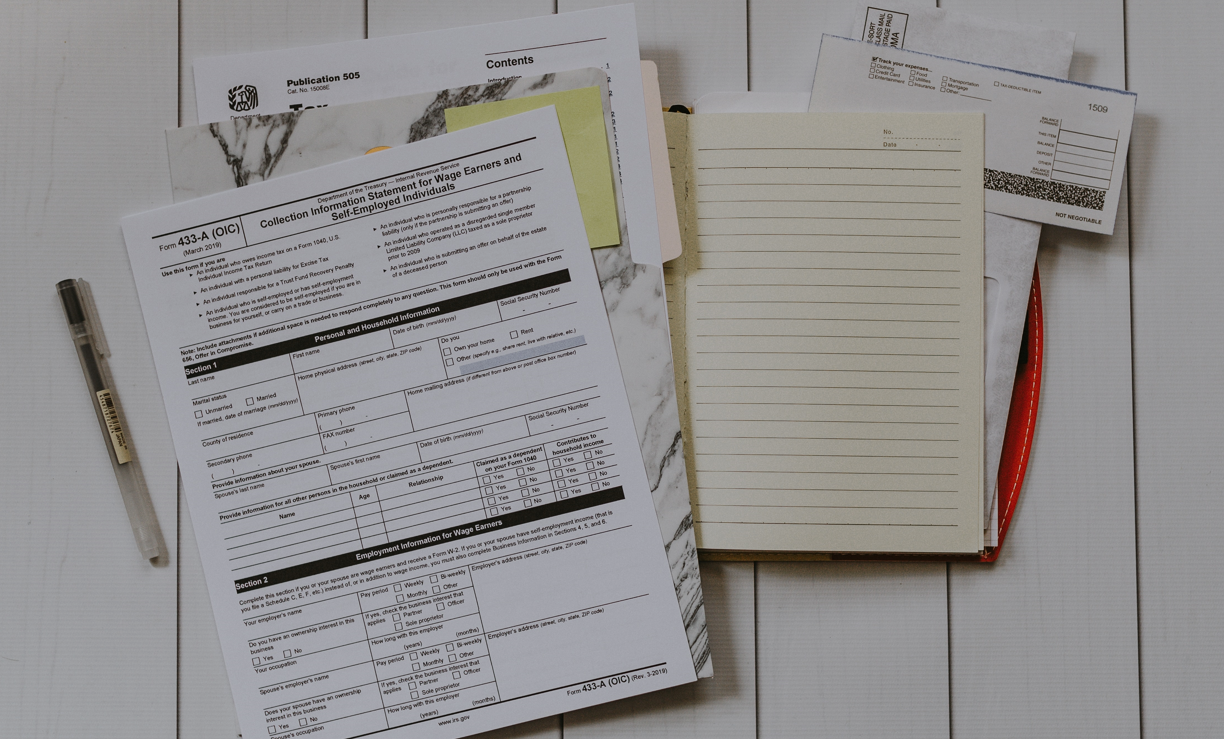A lot of our readers write to us with questions about their homes and taxation, so we decided it was time for an overview
By Olev Edur
Photo: iStock/fizzles.
Many of the questions Good Times receives from readers pertain to real estate. For most homeowners, retired or otherwise, that property represents their single most valuable asset (or assets, for those owning homes plus cottages or other second properties). And invariably, these questions revolve around taxation; to that end, the following is a brief primer on residential real estate tax rules in Canada.
As a homeowner, you probably know that real estate is considered a capital asset, so half of the profit from its sale must be included on your T4 return as a taxable capital gain. (There are exceptions—if you’re in the habit of flipping houses frequently, for example, Canada Revenue Agency (CRA) may deem your activities to be a business or an “adventure in the nature of trade,” in which case the profits will be fully taxed.)
To calculate a capital gain for tax purposes, you start with the purchase price and then add the cost of major repairs and improvements (always keep receipts in case you’re ever questioned by CRA), and the total becomes your adjusted cost base (ACB). Selling price minus ACB equals gross profit, but you can also deduct from the sale proceeds any “outlays and expenses”—amounts incurred to sell the property. These could include fixing-up expenses, land transfer taxes, sales commissions, legal fees, advertising costs, and so on, to arrive at a net profit figure for tax purposes.
Most retiree homeowners are also probably aware that one’s home should qualify for the principal residence exemption (PRE), so there should be no tax at all upon its disposition (although no expenses can be claimed, either). There are, however, certain things you must or must not do to ensure that you can maximize this potentially huge tax break.
New Property Sale Declaration
In the past, you didn’t need to report the sale of a home on your tax return, but that changed in 2016. Now, if you sell any real estate at all you must declare it on Schedule 3 of your tax return, and if you want to claim the PRE, you must check the appropriate box on the back of the schedule.
“Before 2016, CRA’s position was that there would be no tax to pay, so no form of declaration was required,” says David Truong, a tax advisor at National Bank Private Banking 1859’s “expertise centre” in Montreal. “Now it’s mandatory, and if you forget, there may be a penalty of $100 per month up to an $8,000 maximum.
“It’s up to the CRA to decide the actual amount,” Truong adds. “If you catch it right away, they could say it was an honest mistake and may not penalize you at all, but if five years have gone by and you’ve got another residence, and then you decide to go back and try to change your return, that’s where it could get messy.
“There have been other changes to the PRE in recent years, too,” Truong says. “For example, trusts are often used for the protection of assets, and in the past, you could have a PRE held in an alter ego trust, but not anymore—now there are restrictions.”
The Principal Residence
What exactly does it take for a home to qualify for the PRE? You have to live there, but that doesn’t mean you must sleep there most nights. Nor need it be bricks and mortar: CRA’s Capital Gains guide states that in addition to a house, condo, or cottage, a principal residence could be a trailer, mobile home, or houseboat. For a residence to qualify for PRE, the guide lists just four criteria:
1. It is a housing unit, a leasehold interest in a housing unit, or a share of the capital stock of a co-operative housing corporation you acquire only to get the right to inhabit a housing unit owned by that corporation.
2. You own the property alone or jointly with another person.
3. You, your current or former spouse or common-law partner, or any of your children lived in it at some time during the year.
4. You designate the property as your principal residence.
So if, for example, you have a cottage, as well as a home, and the accrued gains on the cottage are greater than on the home, you could use the PRE on the former provided you or the others lived there at any time during the year, even for a day or two—there’s no minimum sojourn requirement.
“If you own more than one property, you could split the principal residence designation from year to year,” says Jennifer Poon, the director of wealth management taxation at Scotiabank in Toronto, adding that this would enable you to maximize the value of the exemption every year—although you would need to know each property’s fair market value (FMV) every year end.
Usually, though, one’s greatest PRE prospects will derive from the home; it’s likely worth the most, as trailers and houseboats seldom appreciate in value. On the other hand, a cottage you’ve owned for many years might generate a bigger PRE than a city home you’ve owned for just a few years (provided of course that you haven’t claimed the PRE elsewhere during the other years).
Long-Term Ownership Dates
In the case of property you’ve owned for a long time, three key dates could also affect the tax equation, according to Debbie Pearl-Weinberg, the executive director of tax and estate planning at CIBC in Toronto: “Capital gains taxation began in 1972, so if you owned the property before then—many families, for example, have owned their cottages for a long, long time—you need to know the property’s FMV as of January 1, 1972. That becomes your cost base for any sale.
“Also, before 1982, married couples could each designate their own principal residences, but now a couple can have only one principal residence. If you are planning to sell one of those properties, you have to look at the number of years you owned it prior to 1982,” Pearl-Weinberg says.
“For example, if you owned it for 20 years before that and 20 years afterward, just to use fictitious numbers, half the gain would be taxable [at the one-half inclusion rate, meaning that one-quarter of the total gain would be considered fully taxable income]. Similarly, before 1994, same-sex couples were not considered spouses, so each person could have his or her own principal residence until the end of 1993. Again, you would count the years.”
Giving Property to the Kids
What happens if you want to give the cottage or house to the kids? Should you consider joint ownership or leave it to them in your will? Or just give it to them outright?
A principal residence can be transferred totally tax-free; joint ownership (with “rights of survivorship”) is simply considered a disposition of half the property (or equal shares, if there’s more than one co-owner). This, too, is non-taxable, as will be the final transfer of the remaining share. For recipients, however, the transferred property may no longer be tax-exempt. “If your children already own their own homes, they will need to consider which property they would like to designate as a principal residence for tax purposes,” Poon says.
To retain the PRE for their own homes, the kids will have to pay capital gains tax on any further increases in the value of the transferred property (or the co-owned portion), and the FMV at the time of ownership change becomes their cost base, even if it was gifted/free. In this case, giving away the property in whole or in part may not be a good financial move—you’re turning tax-exempt property into taxable property.
With any such property transfer, there’s more to think about than taxes. “There are many technical issues when you’re dealing with a cottage transfer to the children, but there are also all the softer issues,” Pearl-Weinberg says. “You definitely need to speak to the kids first—what do they want to do? These are big issues.
“For example, how do you treat everyone in the family equally when some want to use the cottage and some don’t?” Pearl-Weinberg says. “If they’re to keep the cottage, who pays for the upkeep? And if there’s tax on a deemed disposition, how is that funded? If you take out life insurance to fund the tax liability, who pays for that?”
Similarly, joint ownership arrangements may streamline the final transfer of property, but you’re giving the child unfettered right to use the property and even to pledge it as security against loans while you’re still alive; it may also become exposed to family law or other judgments against the child (depending on the province).
With one child, things can be relatively simple, but with more, joint ownership or outright transfers can be fraught with internecine peril. All joint owners are deemed to own equal shares, but is that fair? What if only one has helped to look after the cottage? And will they get along?
“Decisions with regard to the property—for example, selling it—need to be unanimously agreed to by all the joint owners,” Poon says. “So it’s important to consider the implications and create resolution tools among the children, should there be any disagreement.”
Yet another PRE concern arises if you’re planning to rent out part of your home: if you fall afoul of the “change in use” rules (see box at right), the result could be a partial or even full loss of the exemption. Beyond that, you should keep in mind that the foregoing is merely a superficial explanation of the rules; law in any field is complex and is based on facts and individual circumstances. Legal advice is therefore essential in any real-estate transaction.
Furthermore, if you own property outside Canada, you should get advice from someone familiar with that jurisdiction’s laws regarding property sales, as these may be quite different from ours.
And finally, for those with foreign property, note that PRE rules don’t require a principal residence to be situated in Canada.
NEXT WEEK: What you need to know about the possible effect of rental income on your principal residence exemption.






